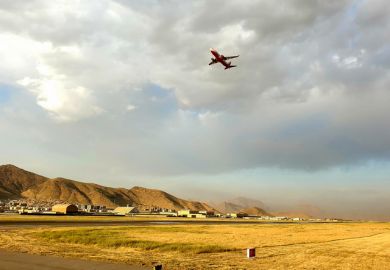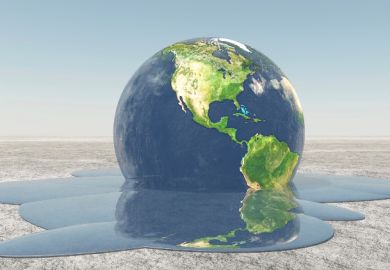The Cambridge Survey of World Migration demonstrates effectively the extent to which this century has been built on foundations put in place by earlier migrations. This is one of two general themes running through this ambitious yet accessible reference work. The second concerns the mechanisms behind migration in the modern period.
Myths about migration remain powerful, as editor Robin Cohen reiterates, and debunking them is high among his priorities. Nor is he afraid to be Eurocentric: while considerable space is devoted to nonwestern migrations, the Survey argues strongly that many of the processes transforming the modern world have been triggered by western interests, directly or indirectly. To avoid this fact would be to duck the issue.
Although "world migration" is mentioned in the title, the focus is on international or intercontinental migration and regional migration within continents. The Survey touches upon other processes, such as migration between regions, only in passing. African slave migration is ignored altogether, on the grounds that it has already been extensively chronicled elsewhere. While this may be valid, other omissions are less readily understandable, for instance, the large-scale migration which took place from mainland China to Taiwan after the communist victory in 1949.
Overall, Cohen is to be congratulated for the balance between argument and example. This is reflected in the analytical framework with its useful prologue and the introductions to the 14 parts of the Survey, on the one hand, and the essays which make up those parts, on the other.
Most parts explore a certain theme, such as forced labour migration, rural-urban migration, refugee migration, usually in a given regional setting. The 95 entries are substantial (2,000-5,000-word) articles. The contributors - who come from countries - belong to a range of disciplines, although the style of entries and the quantity of further information provided in the references varies from piece to piece. Some entries, such as those dealing with labour migrants in southern Africa, can hardly avoid reflecting the highly politicised nature of such movement, which makes for a strong contrast in tone with entries on the more distant past.
The range of approaches means that it is possible to supplement the treatment in one contribution with that in others. Asian migration to the Americas, for example, is discussed under the headings, "The growth of restrictive policies in the colonies of settlement", "Indentured migrants from Japan", and "European and Asian migration to Brazil", to mention just three. Essays such as Astri Suhrke's "Refugees and asylum in the Muslim world" and Giovanna Campani's "Women migrants: from marginal subjects to social actors" show how migration studies are moving to encompass a greater diversity of approach. The final section, "Emerging trends", highlights the likely future direction of the subject.
This Survey is no glossy "encyclopedia" of the sort so popular with publishers. There are few concessions to images and colour. In one way this is a shame, but it avoids the static quality of many photographs depicting migrants during their upheaval and resettlement - processes which, as this wide-ranging reference book shows, permeate the experience of large numbers of people all over the world.
Sarah Ansari is lecturer in modern Middle Eastern and world history, Royal Holloway, University of London.
The Cambridge Survey of World Migration
Editor - Robin Cohen
ISBN - 0 521 44405 5
Publisher - Cambridge University Press
Price - £75.00
Pages - 570
Register to continue
Why register?
- Registration is free and only takes a moment
- Once registered, you can read 3 articles a month
- Sign up for our newsletter
Subscribe
Or subscribe for unlimited access to:
- Unlimited access to news, views, insights & reviews
- Digital editions
- Digital access to THE’s university and college rankings analysis
Already registered or a current subscriber?



